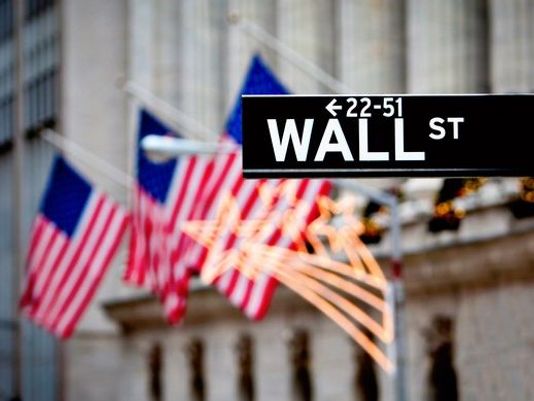
The U.S. economy just got its best report card in nearly four years. If growth truly is ratcheting upward on a sustained basis, as the White House suggests, then that could alter the outlook for stocks, bonds, housing and other investments.
The higher-growth scenario becomes more likely after a second-quarter rise in U.S. gross domestic product to 4.1 percent, the best showing since the third quarter of 2014. Some economists were quick to dampen the enthusiasm – pointing out, for example, that exports for products like soybeans jumped before tariffs took effect.
But others think a more permanent higher-growth outlook is in the cards, including Treasury Secretary Steven Mnuchin, who cited the potential for four or five years of growth in the range of 3 percent-plus, fueled by last year’s income-tax cuts. An economic second wind, if it materializes, would come amid what is already one of the longest expansions ever.
Here’s how that might play out for key investment categories:
Tailwind for stocks
A shift to higher economic growth should be good for stocks, driving up corporate profits and allowing companies to strengthen their balance sheets further while delivering more money to investors as dividends and boosting merger activity. Volatility could intensify, and bonds could become more competitive with stocks if yields rose. But overall, it’s hard to envision the stock market crashing if economic growth picks up.
Stock prices have surged during the current expansion, but valuations don’t appear all that lofty. Average price-earnings ratios based on expected forward earnings for the next 12 months, for stocks in the Standard & Poor’s 500, stand around 16. That matches the average of the past 25 years, according to JPMorgan Asset Management.
Some investors are concerned that corporate profits are nearing a peak for the current cycle. But if economic growth picks up, profit momentum likely would continue.
The longest bull market of roughly the past century was 113 months, spanning from October 1990 to March 2000. Stocks have advanced for 112 months in the current cycle (through July), but the gains haven’t been as large, suggesting there’s still room to run.
Higher CD yields
Reflecting the often-sluggish pace of the current expansion, interest rates and inflation have remained subdued. Both have picked up a bit, but nothing like normally would be the case after nine years of economic growth.
The average one-year certificate of deposit has risen to 0.7 percent from around 0.43 percent at the start of the year, while-money market deposit accounts have inched up to 0.2 percent from 0.14 percent, said Greg McBride, chief financial analyst at Bankrate.com.
Economic growth at a higher, sustained pace likely would lead to rising yields for ultrasafe instruments, but inflation also could accelerate. “If inflation rises right alongside interest rates, it becomes a hollow victory for savers as they don’t gain any real ground in terms of buying power,” said McBride.
The rate scenario of the past decade has been dismal for savers. Someone who kept $100,000 in a six-month CD last year would have earned only about $400 in interest, down from roughly $5,200 in 2006, according to JPMorgan.
Bond risks more pronounced
Interest rates haven’t risen by much during the economic expansion, but they have increased enough so far this year to trigger modest losses for bonds and bond mutual funds (rates move inversely to bond prices). Bonds rarely lose as much ground as stocks during downdrafts, but negative total returns do occur every five years or so.
To minimize the damage, cautious investors should stick with bonds or bond mutual funds with shorter maturities of maybe five years or less. If interest rates keep pushing higher, these investments wouldn’t get hurt as much as bonds with longer maturities.
Speaking of bonds, worries about an “inverted yield curve” have surfaced. This term describes the unusual tendency of bonds with short maturities to pay higher yields than longer-maturity bonds. An inverted yield curve – short-term rates above long-term rates – traditionally has been a signal that a recession could be imminent. We’re not there yet, but it bears watching. For example, two-year Treasury notes recently yielded around 2.7 percent compared to 3 percent for 10-year Treasurys.
Conversely, if economic growth picks up, long-term rates likely would follow, making an inverted curve, and imminent recession risk, less likely.
Further housing momentum
Higher economic growth, if it persists, also could give a boost to home prices, unless it triggers sharply higher interest rates or other unfavorable fallout. Housing conditions are highly localized. But in general, property values have been climbing, with fewer distressed sales, fewer days on the market and other signs of vibrancy, reported the National Association of Realtors.
Prices in the nation’s 20 largest cities are up more than 6 percent on average over the past year, according to the latest readings from S&P CoreLogic Case-Shiller.
At around 64 percent, the nation’s home ownership rate remains below the peaks above 69 percent reached in 2004-05. Housing in general is fairly affordable in most cities with Americans spending an average of 10.3 percent of their disposable income to service debts, said JPMorgan. That’s below the cyclical peak of 13.2 percent in late 2007, before the economy slipped into recession.
Higher, sustained economic growth might push up interest rates and inflate home prices, but it could take a while for the increases to turn away buyers, precipitating a slump. Rising home prices are one reason consumer confidence has improved. A persistent uptick in economic growth could keep the momentum going.

